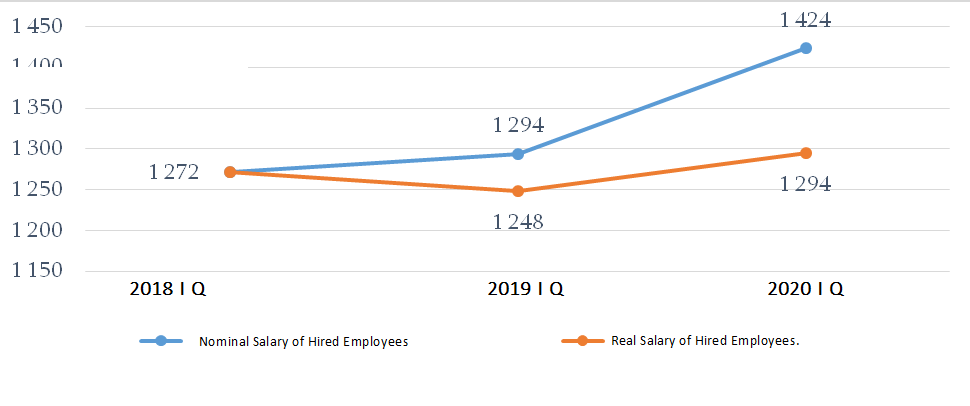On 26 February 2020 Georgia confirmed its first case of COVID-19 infection. This was preceded by banning flights with China (29.01) and Iran (23.02). In parallel with the expansion of the virus spread area, Georgia started to tighten restrictions and a nationwide state of emergency was declared on 21 March 2020. The number of economic sectors subjected to restrictions increased rapidly and in time almost all types of economic activity were suspended, leaving some exceptions allowed by the respective decree (medical facilities, grocery stores, commercial banks, etc.). Currently, most of the restrictions have been lifted or relaxed.
Given all of the aforementioned, it is less likely that the natural consequences of the pandemic and the restrictive government policy adopted to stop the spread of the virus had a substantial negative impact upon Georgia’s economic environment in the very first quarter of 2020. However, the initial restrictions and negative expectations could have been reflected in the business sector’s behaviour. It is of interest to take a look at the trend of changes in the business sector’s jobs and salaries. Currently, only the first quarter data have been made available by the National Statistics Office of Georgia and Graph 1 shows the respective figures. The National Statistics Office of Georgia will not publish the second quarter data – which is more interesting in this regard – until 3 September 2020.
Graph 1: Changes of Salary of Hired Employees in the Business Sector (GEL)

Source: National Statistics Office of Georgia, author’s calculations
As the data show, the average nominal salary of business sector hired employees in the first quarter of 2020 was GEL 1,424 which is 10% more as compared to the GEL 1,294 of the same period in 2019. Of note is that whilst doing data analysis in time, it is important to take the price level change factor into account. To this end, it is common to use indicators adjusted to the changes in the consumer price level; that is, real indicators.
The nominal salary shows what amount of labour remuneration in monetary form each citizen gets. If the nominal salary increases, an employee receives more labour remuneration. However, this information says nothing as to whether or not a person’s social well-being improved since it does not take the price level change effect into account. In other words, it is important that an employee is able to afford the purchase of more products under an increased salary as compared to whether or not he gets a higher salary. The real income change trend for hired employees is measured by a comparison of the inflation adjusted income. Graph 1 shows the respective data.
As illustrated by the graph, the average nominal salary of hired employees increased in the first quarter of 2020 although the growth could not offset (was insufficient) the price level growth effect and the real salary of hired employees decreased from GEL 1,272 to GEL 1,248. Therefore, the social well-being of hired employees worsened despite the growth of the nominal salary. In regard to the first quarter of 2020, the nominal salary growth was 10% and the price level growth was 6.1% as compared to the previous year. Therefore, the average real salary of hired employees increased from GEL 1,248 to GEL 1,294. Of note is that in the first quarter of 2020, the number of jobs in the business sector reached 640,495 and exceeded the same figure of 2019 by 21,113 which constitutes a 3.4% growth.
Therefore, it is possible to say that there was no trend of a decrease in the salary of employees or in the number of jobs in the first quarter of 2020 which proves the idea that the negative impact of the pandemic was not yet reflected in real changes in the first three months of the year. It is expected that we will get a substantially deteriorated picture as of the second quarter of 2020 which will possibly be reflected in cuts of both jobs and salaries of employees.







